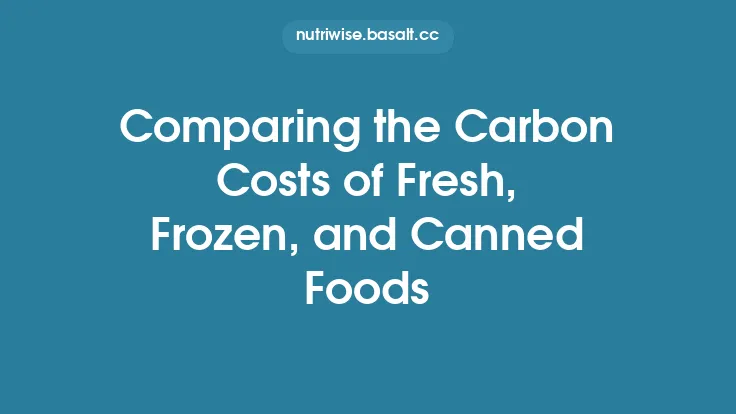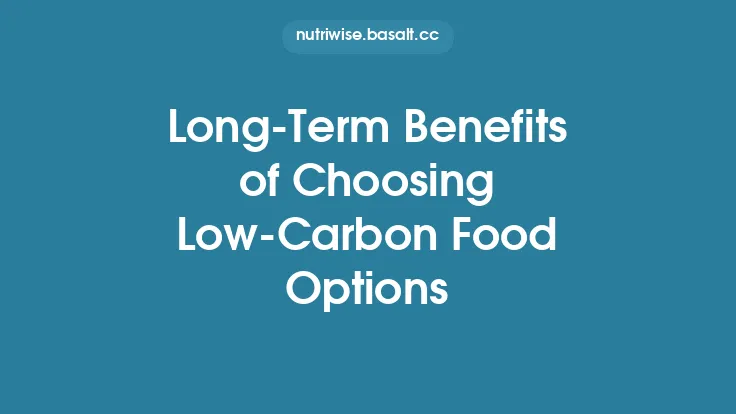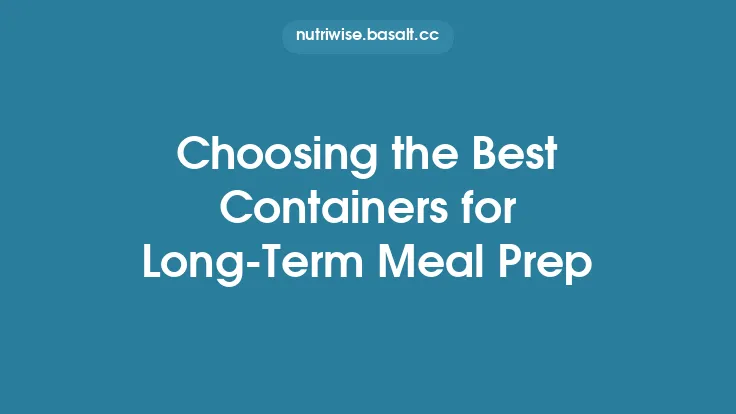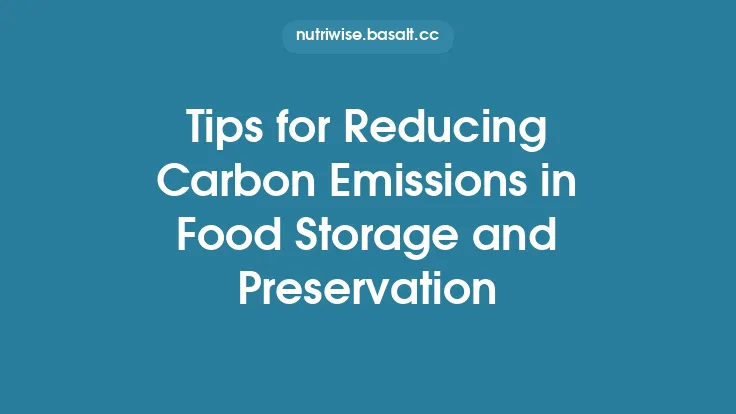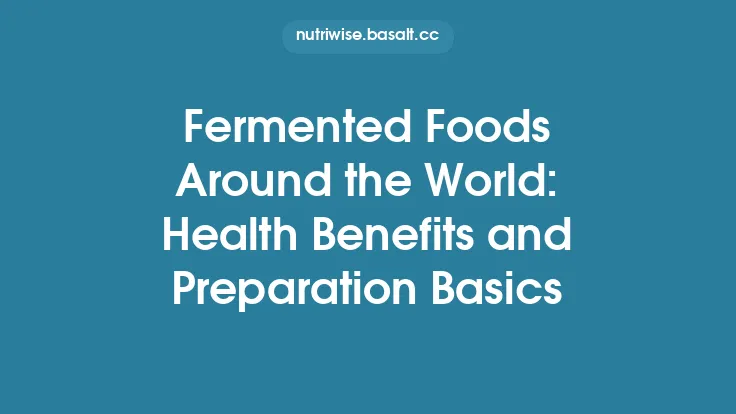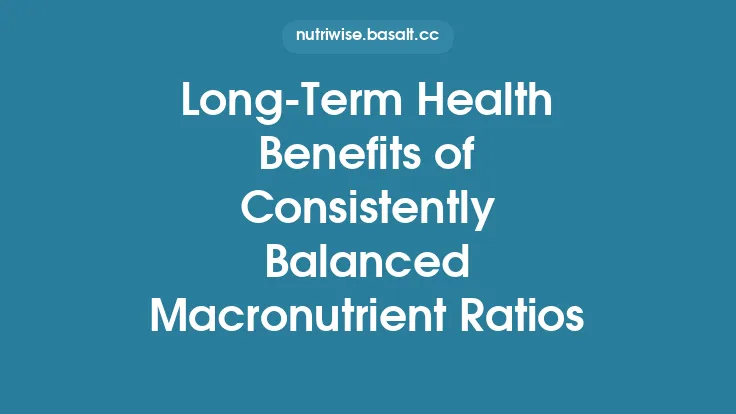Long‑term food preservation is a cornerstone of sustainable eating, and the choice of container can dramatically affect both the quality of the food and the environmental footprint of your pantry. While plastic has dominated the market for decades, glass jars are increasingly recognized as a superior alternative for storing foods over extended periods. Below, we explore the scientific, health‑related, and ecological reasons why glass outperforms plastic when it comes to safeguarding the longevity and safety of your provisions.
1. Superior Barrier Properties
Oxygen Transmission Rate (OTR)
Glass is an impermeable solid; its OTR is effectively zero. In contrast, most plastics—especially polyethylene terephthalate (PET) and low‑density polyethylene (LDPE)—allow a measurable amount of oxygen to diffuse through the material over time. Even trace oxygen ingress can accelerate oxidative rancidity in fats, discoloration in spices, and spoilage in fermented products.
Moisture Vapor Transmission (MVT)
Similarly, glass does not permit water vapor to pass, protecting dry goods such as grains, beans, and powdered ingredients from humidity‑induced clumping or mold growth. Certain plastics, particularly polyvinyl chloride (PVC) and some multilayer films, have higher MVT values, which can compromise the dry environment needed for long‑term storage.
Light Protection
Many glass jars are available in amber or cobalt hues that block ultraviolet (UV) radiation, a key factor in the degradation of light‑sensitive nutrients (e.g., vitamin C, carotenoids) and the breakdown of oils. While some plastics can be tinted, the UV‑blocking efficiency of colored glass is generally superior and more consistent.
2. Chemical Inertness and Food Safety
Absence of Leachable Additives
Plastic containers often contain additives such as bisphenol A (BPA), phthalates, and various plasticizers to improve flexibility and durability. Over time, especially under heat or acidic conditions, these chemicals can migrate into food, raising concerns about endocrine disruption and other health effects. Glass is chemically inert; it does not leach substances regardless of temperature, pH, or storage duration.
Thermal Stability
Glass can safely endure a wide temperature range—from freezer temperatures (‑20 °C/‑4 °F) to boiling water (100 °C/212 °F) and even oven use (up to ~250 °C/482 °F for tempered varieties). This thermal resilience enables safe sterilization, hot‑fill processing, and reheating without compromising the container’s integrity. Most plastics soften, warp, or release additional chemicals when exposed to high heat, limiting their utility for certain preservation methods such as canning or hot‑water bath sealing.
pH Neutrality
Acidic foods (tomatoes, citrus, pickles) can accelerate the breakdown of certain plastics, leading to micro‑cracking and increased leaching. Glass remains unaffected by pH, ensuring that the flavor, aroma, and nutritional profile of acidic foods stay unchanged over months or years.
3. Longevity and Reusability
Durable Lifecycle
A single glass jar can be reused indefinitely if handled with care, whereas plastic containers typically degrade after a handful of uses due to scratches, stress‑cracking, and loss of structural integrity. The durability of glass translates into fewer replacements, reducing material consumption and waste generation over the long term.
Ease of Sterilization
Glass tolerates rigorous cleaning methods—such as boiling, dishwasher cycles, and chemical sanitizers—without retaining odors or stains. This ensures a consistently hygienic environment for each new batch of stored food. Plastics can retain residues and develop micro‑scratches that harbor bacteria, making thorough sterilization more challenging.
4. Environmental Impact Across the Full Lifecycle
Production Energy and Emissions
While the initial energy input for glass manufacturing is higher than that for many plastics, the overall environmental balance shifts when considering the jar’s extended usable life. A glass jar that serves for 50+ cycles spreads its embodied energy across many uses, dramatically lowering the per‑use carbon footprint compared with a plastic container that is discarded after a few cycles.
Recyclability and Circular Economy
Glass is 100 % recyclable without loss of quality; cullet (recycled glass) can be melted and reformed into new jars endlessly. In contrast, most plastic food containers are down‑cycled into lower‑grade products, and a significant portion ends up in landfills or as environmental litter. Moreover, glass recycling rates are generally higher in many regions, further enhancing its sustainability profile.
End‑of‑Life Scenarios
If a glass jar does break, it can be repurposed as mosaic material, sand, or even incorporated into construction aggregates, ensuring that the material remains in productive use. Plastic fragments, however, persist as microplastics, posing long‑term ecological hazards to soil and aquatic ecosystems.
5. Functional Advantages for Specific Food Types
| Food Category | Why Glass Excels | Practical Tips |
|---|---|---|
| Dry Staples (rice, beans, flour) | Zero moisture ingress; airtight sealing prevents pest infestation. | Use amber jars for light‑sensitive grains; employ silicone gaskets for a hermetic seal. |
| Oils & Fats (olive oil, nut butters) | No oxygen permeation; UV‑blocking glass preserves flavor and prevents rancidity. | Store in dark‑colored jars; keep in a cool, dark pantry. |
| Fermented Products (kimchi, sauerkraut) | Inert surface prevents unwanted chemical reactions; can withstand acidic brine. | Ensure lids are sealed tightly; sterilize jars before filling to avoid contamination. |
| Canned Preserves (jams, pickles) | Withstands hot‑fill processing; maintains vacuum seal for years. | Follow proper hot‑water bath or pressure‑canning protocols; check seals periodically. |
| Beverages (infused water, kombucha) | No leaching of plasticizers; glass tolerates carbonation pressure. | Use swing‑top jars with rubber gaskets for natural carbonation. |
6. Economic Considerations
Up‑Front Investment vs. Long‑Term Savings
A set of high‑quality glass jars may cost more initially than a comparable plastic set. However, when amortized over a lifespan of 10–20 years (or more), the cost per use drops dramatically. Additionally, the reduced need for replacement purchases and the avoidance of food waste due to spoilage translate into tangible savings.
Bulk Purchasing and Refill Models
Many bulk‑food retailers and refill stations now accept glass jars for dry goods, offering discounts for customers who bring their own containers. This not only reduces packaging waste but also incentivizes the continued use of glass, reinforcing its economic viability.
7. Aesthetic and Organizational Benefits
Transparency and Visibility
Clear glass provides an immediate visual cue of contents, expiration dates, and quantity remaining, facilitating better inventory management and reducing the likelihood of forgotten items spoiling.
Uniformity and Stackability
Standardized glass jar shapes allow for efficient stacking in pantry shelves, cabinets, and even freezer compartments, optimizing storage space—a practical advantage that indirectly supports waste reduction.
8. Addressing Common Concerns
Breakage Risk
While glass can shatter if dropped, tempered or borosilicate varieties are engineered for higher impact resistance. Using protective padding (e.g., silicone sleeves) and storing jars in stable, low‑traffic areas mitigates breakage risk.
Weight
Glass is heavier than plastic, which may be a consideration for transport. However, for home storage the added weight is negligible, and the benefits in preservation and sustainability outweigh the inconvenience.
Cost of Replacement After Breakage
In the rare event of breakage, the cost of a single jar is modest compared to the cumulative expense of repeatedly purchasing disposable plastic containers.
9. Integrating Glass Jars into a Sustainable Kitchen
- Standardize Sizes – Choose a core set of common volumes (e.g., 250 ml, 500 ml, 1 L) to simplify labeling and stacking.
- Label Clearly – Use reusable chalkboard labels or waterproof stickers to note contents and dates, preserving the visual clarity of the glass.
- Maintain Seals – Periodically inspect lids, gaskets, and swing‑top mechanisms for wear; replace rubber components as needed to ensure airtight performance.
- Rotate Stock – Practice a “first‑in, first‑out” system; the transparency of glass makes it easy to see older items at a glance.
- Leverage Community Resources – Participate in local bulk‑food co‑ops that accept glass jars, further reducing reliance on single‑use packaging.
10. The Bottom Line
When the goal is to preserve food safely and sustainably over the long term, glass jars present a compelling package of advantages: impermeable barriers to oxygen, moisture, and light; chemical inertness that safeguards health; durability that supports endless reuse; and a lifecycle that aligns with circular‑economy principles. While plastic may offer convenience in certain short‑term scenarios, its limitations in barrier performance, potential for chemical leaching, and environmental drawbacks make it a less suitable choice for enduring food storage. By opting for glass, consumers not only protect the quality and nutritional value of their foods but also contribute to a more resilient, low‑impact food system.
